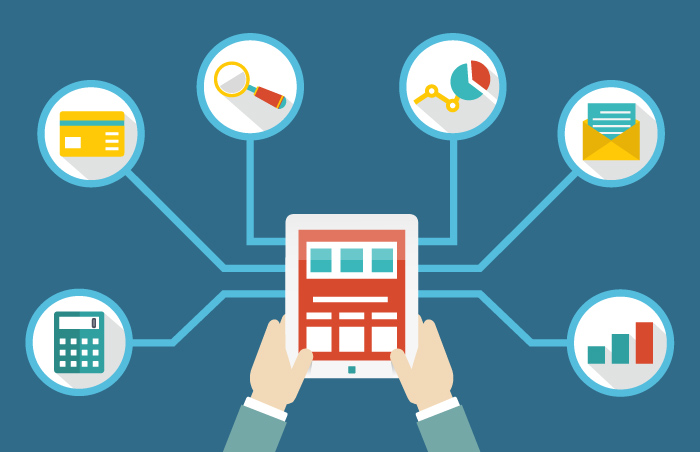Making it Easy for Sales Pros to Go Mobile

4 Types of Trade Show Survival Essentials
March 12, 2015
3 Ways to Use Tablets at Trade Shows
April 15, 2015Have you heard this one? A sales director says, “We need to make selling easier on our reps!” So, a motivated team of marketing and IT individuals spends months evaluating, selecting, implementing, and deploying a new software system. The research indicates it will radically improve the sales team’s productivity, thus greatly improving the bottom line. The sales team goes through training…
…and then they never use the software again.
Perhaps that’s a bit dramatic. What happens in many cases is that sales staff adopts the new software, but neglects to take advantage of the very features intended to promote positive change. They simply use the same functionality that was previously available, ignoring the unfamiliar components. It’s human nature, but a discouraging experience for many organizations, especially because most sales teams express willingness and excitement for new technology.
So why won’t they use new features? Because using a particular software program becomes stone-cold habit, and such routines are difficult to change. Just look at the lengths to which people will go to make and break health and lifestyle habits: hypnotism, nicotine patches, chewing gum, strategically locating their running shoes in front of the door, and so on.
It’s much easier to do something new when we can make it feel as familiar as possible. To incorporate new processes in a way that seems like a normal routine to your users, consider adopting mobile software.
Benefits of Mobile Sales Force Automation
Using mobile technology allows you to eliminate outdated paper systems, bulky catalogs, and clunky laptops. You’ll reap some other important benefits:
- Increased employee productivity and loyalty
- Error reduction by processing orders directly at the point of discussion or sale
- Lowered costs
In December 2013, Americans spent an average of 66 minutes a day using apps and browsing the Web on their Smartphones.[1] The beauty of introducing mobile sales force automation tools is that your team already uses mobile devices in their daily lives, which means the interface, operating system, response time, etc. are old hat.
Bring Your Own Device (BYOD) policies exist, in part, because people would rather use their own mobile tools than ones provided by a company. By implementing a BYOD policy, you can avoid the expense of hardware purchases and subsequent maintenance; if a tablet breaks, it’s not the company responsibility to fix or replace it.
Unsurprisingly, studies have shown that employees are much more invested in maintaining devices that the own. In addition, employees tend to be more productive when using their personal devices, and because they are already familiar with device features implementing mobile software tends to require less training.
“Going mobile” offers the additional benefit of actual mobility. Sales reps are often away from their desks while cultivating relationships, and mobile technology allows them to access product and customer information wherever they are. New technologies even allow reps to take orders in the field and instantly share information via text, email, and social media.
Moving to the Cloud
Whether mobile or otherwise, there’s a lot to like about cloud-based software solutions. Cloud software usually requires no hardware, installation, or maintenance. With cloud software (referred to as Software as a Service or “SaaS”), you to pay a recurring service fee for usage. Generally, there’s a minimal contractual commitment, so if you don’t like the solution you’re not out an exorbitant amount of money or under any pressure to keep it.
From a data administration standpoint, cloud software is typically easy to manage. Many packages require little-to-no effort from your IT team, and can even be managed by non-technical staffers. End users can organize their own information, run reports, and more.
A recent Microsoft study[2] of small and midsize businesses using cloud services showed that half reported spending less time managing IT, and used fewer internal IT resources than with previous software installations.
Adopting cloud software usually has the added benefit of continuous innovation. Because there’s little customer commitment, solution providers constantly introduce new and improved features, and actively seek customer input and feedback.
A common concern with cloud software is data security. Companies often reject cloud solutions on the premise that if the data is not stored on-site, it’s not secure. However, more than 90 percent of businesses in the Microsoft survey reported experiencing security benefits they didn’t have on-site (e.g. up-to-date systems and anti-virus protection), and a positive impact as a result of cloud adoption.[3]
Any new system requires careful risk/reward evaluation. But as you look to find the right solution to increase the productivity of your sales team, one that they will actually use and perhaps even love, consider low-cost, low-commitment cloud software with mobile capability.



